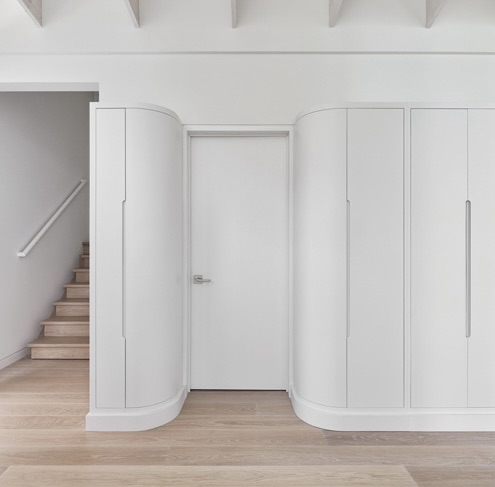*This article is sponsored by Logs End*
One of the first questions homeowners face when choosing hardwood flooring is whether to go with a solid or engineered hardwood floor. Both look and feel the same on the surface, but their construction and performance tell a different story.
Solid hardwood flooring is manufactured a single piece of 1” lumber and is moulded into a ¾” Solid plank with tongue and grooves. Engineered hardwood will be a sliced veneer of real wood adhered to a stable layered core of wood or plywood. The appearance is identical but engineered flooring has clear advantages – especially in wide planks which are becoming ever more popular.
Wide plank flooring brings a luxurious open look to a space. But the wider a plank of lumber the more that wood will naturally want to expand and contract with humidity. Using solid wood in our climate can often lead to a gapping in the dry seasons and swelling in the summer. Engineered planks built on either a plywood or quartersawn core will provide the planks the stability to stay true without movement as humidity changes. This allows you to install planks from 5” – 12” wide without concern.
Now not all engineered is created equal. It’s important for homeowners to understand what to look for in an engineered floor. Your top layer is your “wear layer”. The ideal size for this is 4mm. At 4mm you’re thick enough that you should have multiple lives for your floor. Opportunities to sand and refinish as they wear throughout the years.
Lengths matter too! Proportions are key when selecting your flooring. Wide Planks need longer lengths to look balanced. While shorter boards in a narrow planked floor are common, the wider you go the ratio has to follow. Short planks will give a patchwork feel. If you’re in that 5”+ width, the majority of your planks should fall north of 6 feet.
Engineered flooring is built for multiple settings. It can be installed over plywood subfloors but also glued down or floated over concrete in Condo’s or basements. It’s also stable enough to withstand the seasonal climate swings in three season cottages.
If you’re looking for a narrow plank hardwood look, solid hardwood should be fine for the standard application. However, if your design plan includes a wider plank, a high quality engineered wood will outperform solid hardwood every time.
